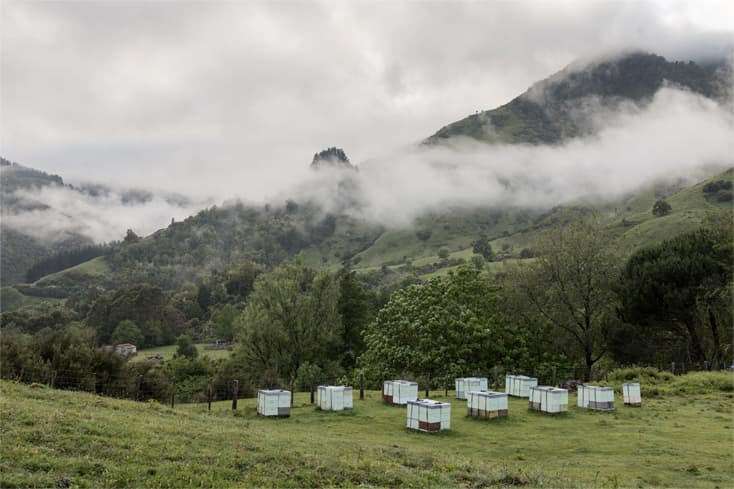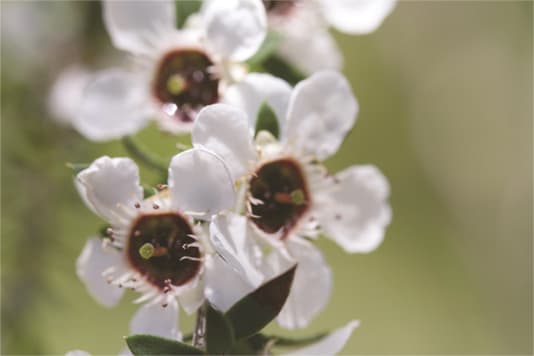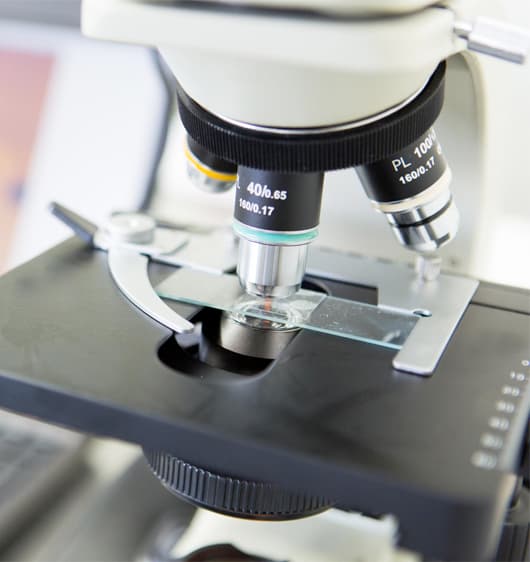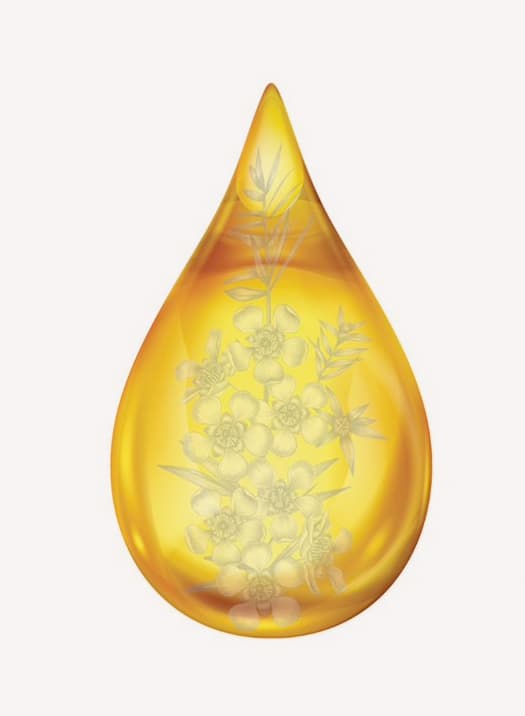
EVERYTHING YOU NEED TO KNOW ABOUT MĀNUKA HONEY
Foodies and wellness buffs around the globe have fallen head over heels for Mānuka honey, a type of honey that is native to the beautiful island country of New Zealand. This dark, golden honey is produced by European honey bees which pollinate the flowers of Mānuka trees, an evergreen tree found in remote regions of New Zealand. The Mānuka tree features thick branches with white flowers that have a sweet scent that bees can’t resist.
Whilst regular honey has long been praised for its many incredible health properties, Mānuka honey has been shown to offer even stronger, more potent health benefits. In this article, we’ll be exploring everything you need to know about this New Zealand superfood, from how it’s harvested to what benefits it offers to why every drop of Melora Mānuka honey is so special. Let’s see what all the buzz is about!

HISTORY OF MĀNUKA HONEY
The Mānuka tree has a long history dating back to New Zealand’s first settlers, the indigenous Māori1. The Māori referred to this superplant as “taonga” or “treasure,” and prized it for its wide variety of uses.
Although its antimicrobial properties were known in traditional Māori medicine, it wasn’t until 1980 that the antimicrobial power of Mānuka honey was confirmed by biochemist Peter Molan.
Since then, Mānuka honey has steadily gained popularity and extensive research has been conducted regarding its range of health benefits.
HOW IS MĀNUKA HONEY HARVESTED?
Beehives are placed in remote regions of New Zealand where Mānuka trees thrive. The trees start blooming from mid-December to mid-January, depending on the season, and only bloom for four to six weeks. Bees forage for the nectar of the Mānuka flower, which they use to make honey.
When the time is right, Mānuka honey producers collect the hives from the sites and remove the honey boxes, which are then transported to a processing facility.
The boxes are stored in a warm room to simulate the inner hive temperature and keep the honey in liquid form. Extracting the honey from the comb involves three steps. First, the wax seal on each cell is pierced. Then, the comb is spun at a high speed to force the honey out of the cells. Finally, the wax is filtered to separate it from the honey.
After extraction, the honey is packed, labeled, and shipped to customers. One unique feature of Mānuka honey is that the beneficial compounds tend to increase over time, so once it’s jarred, it just keeps getting better and better.

WHAT ARE THE SCIENTIFIC BENEFITS OF MĀNUKA HONEY?
Now, for the million-dollar question—what’s so great about this type of honey anyway? Mānuka honey is brimming with natural vitamins, minerals, and amino acids, and contains an active ingredient called methylglyoxal (MGO), which has been scientifically shown to have antibacterial effects2. As a result, this liquid gold offers many science-backed health benefits, including:
► Antibacterial properties (4)
► Anti-inflammatory properties (6)
► Enhanced immune function (7)

WHY CHOOSE MELORA® MĀNUKA HONEY
Melora® Mānuka honey is harvested from remote and untouched forestlands of New Zealand where Mānuka trees naturally grow and thrive. Our honey is a 100 percent natural product, going above the New Zealand government’s guidelines by also complying with the UMF™ standards. The MGO grade can be found on all Melora Mānuka honey jars. The UMF™ grade can be found on all Monofloral Mānuka honey jars certifying that it is genuine and high-quality, and provides the potent antimicrobial properties it’s known for.
Another interesting fact about our company is that each of our honey boxes has a tag that carries encoded information, including the GPS coordinates of the site where the honey was produced. That gives every customer the ability to trace their honey from hive to jar!
Our honey is sustainably sourced and we work in close partnership with landowners in New Zealand, ensuring all parties receive an equal share of the profits from all honey sold. From the moment we step on the land, we do everything we can to be respectful and keep our environmental footprint as small as possible.
You can be assured that every drop of Melora Mānuka honey is produced with the utmost care and attention. If you’re ready to experience the benefits for yourself, visit this page to select the best Mānuka honey for your needs!
References:
1. Mānuka. A honey of a plant. | New Zealand Story (nzstory.govt.nz)
2. “Mānuka. A Honey of a Plant.” New Zealand Story
3. Johnston, M, McBride M, Dahiya D., Owusu-Apenten R, Singh Nigam P. Antibacterial activity of Manuka honey and its components: An overview. AIMS Microbiol. 2018; 4(4): 655–664.
4. White, R. Manuka honey in wound management: greater than the sum of its parts? Journal of Wound Care. 2016; Vol. 25, No. 9.
5. Johnston, M, McBride M., Dahiya D, Owusu-Apenten R, Singh Nigam P. Antibacterial activity of Manuka honey and its components: An overview. AIMS Microbiol. 2018; 4(4): 655–664.
6. Shahzad, A., Cohrs J R. In vitro antiviral activity of honey against varicella zoster virus (VZV): A translational medicine study for potential remedy for shingles. Transl Biomed. 2012;3(2):2.
7. Almasaudi B S., Abbas T A., Al-Hindi R R, et al. Manuka Honey Exerts Antioxidant and Anti-Inflammatory Activities That Promote Healing of Acetic Acid-Induced Gastric Ulcer in Rats. Evid Based Complement Alternat Med. 2017; 2017: 5413917.
ㅤ
8. Johnston, M, McBride M, Dahiya D., Owusu-Apenten R, Singh Nigam P. Antibacterial activity of Manuka honey and its components: An overview. AIMS Microbiol. 2018; 4(4): 655–664.
9. Nguyen, H.T.L, Kasapis, S, Mantri, N. Physicochemical Properties and Effects of Honeys on Key Biomarkers of Oxidative Stress and Cholesterol Homeostasis in HepG2 Cells. Nutrients 2021, 13, 151.
10. Sela M, Maroz D, Gedalia I. Streptococcus mutans in saliva of normal subjects and neck and head irradiated cancer subjects after consumption of honey. J Oral Rehabil. 2000 Mar; 27(3):269-70.
11. Almasaudi B S., Abbas T A., Al-Hindi R R, et al. Manuka Honey Exerts Antioxidant and Anti-Inflammatory Activities That Promote Healing of Acetic Acid-Induced Gastric Ulcer in Rats. Evid Based Complement Alternat Med. 2017; 2017: 5413917.
12. “About the UMF Honey Association.” Unique Mānuka Factor Honey Association. Available: https://www.umf.org.nz/what-we-do/.
13. “Grading System Explained.” Unique Mānuka Factor Honey Association. Available: https://www.umf.org.nz/grading...

